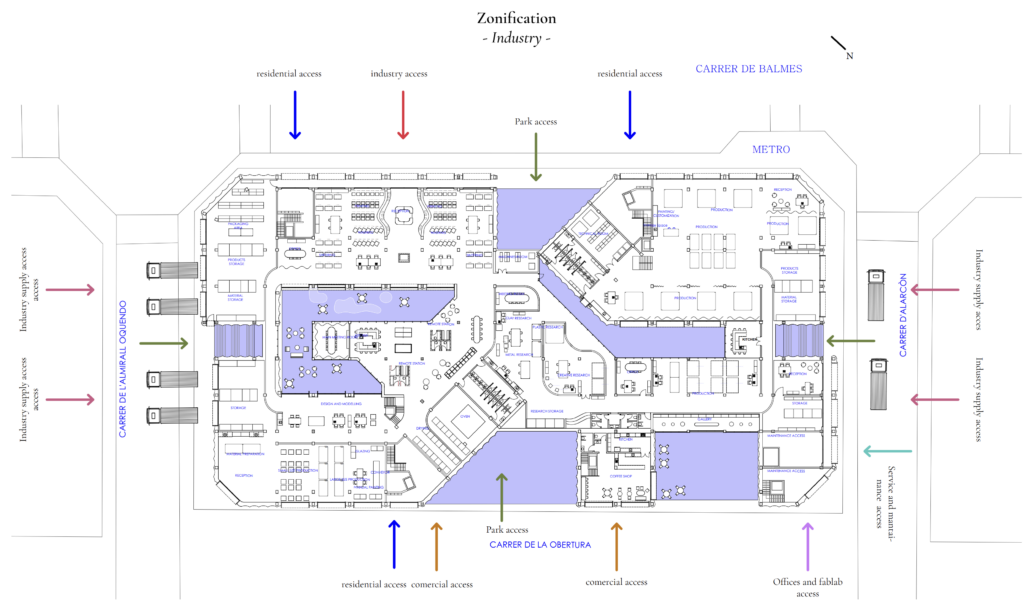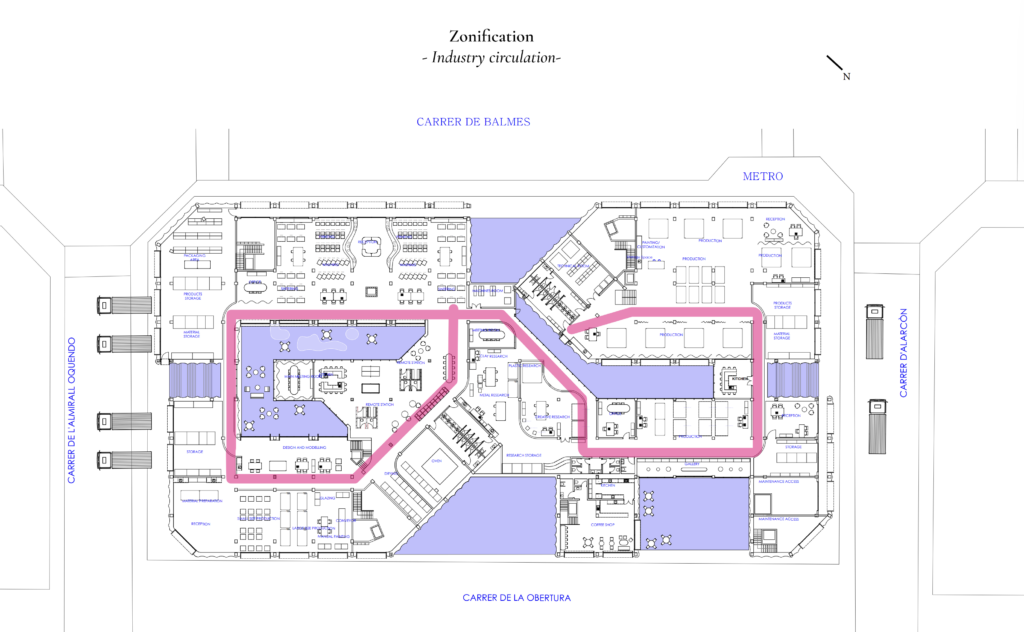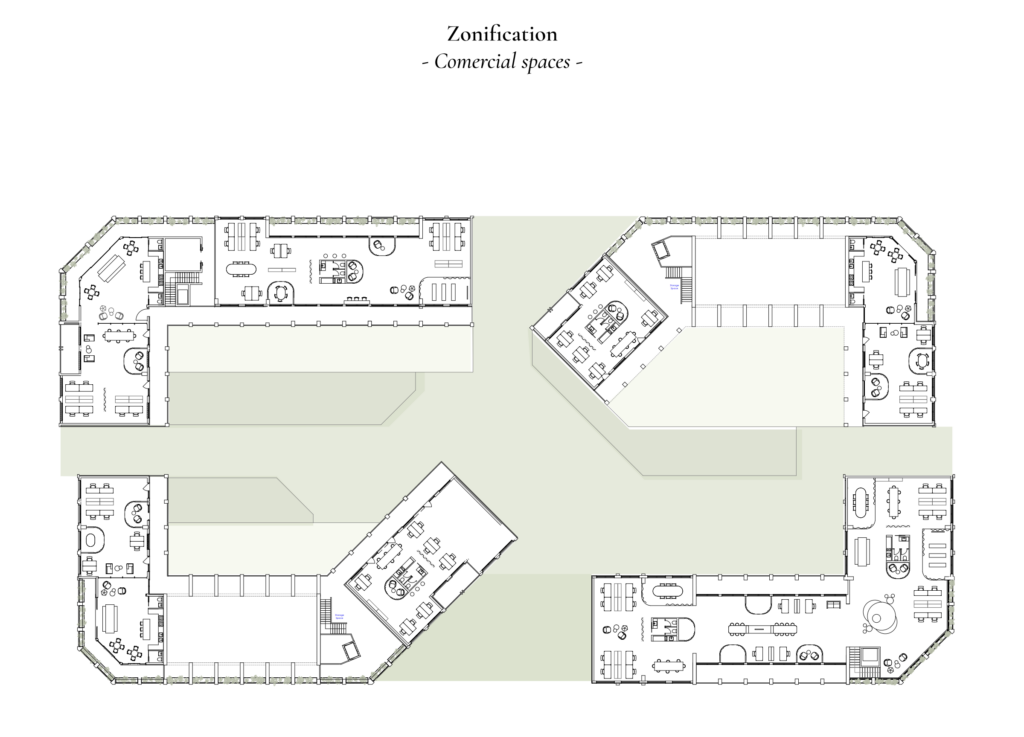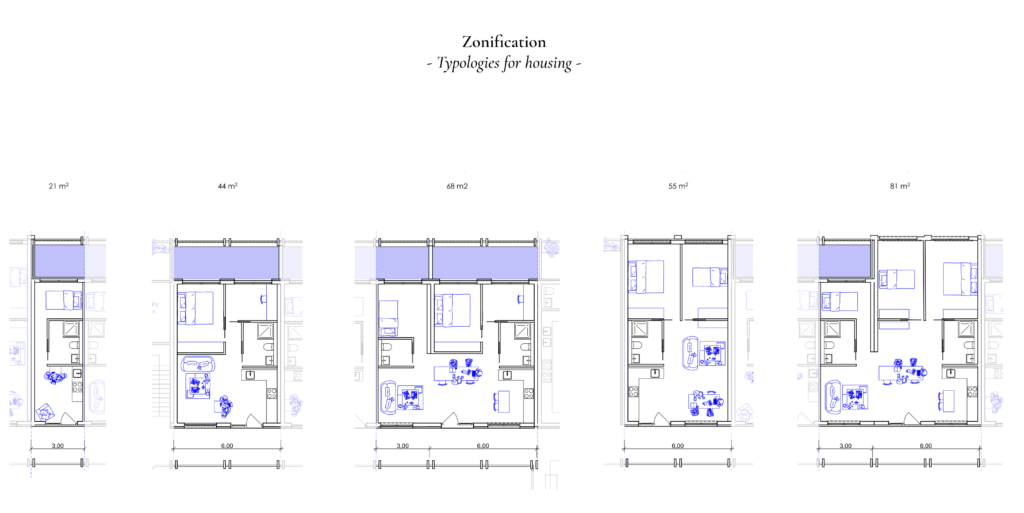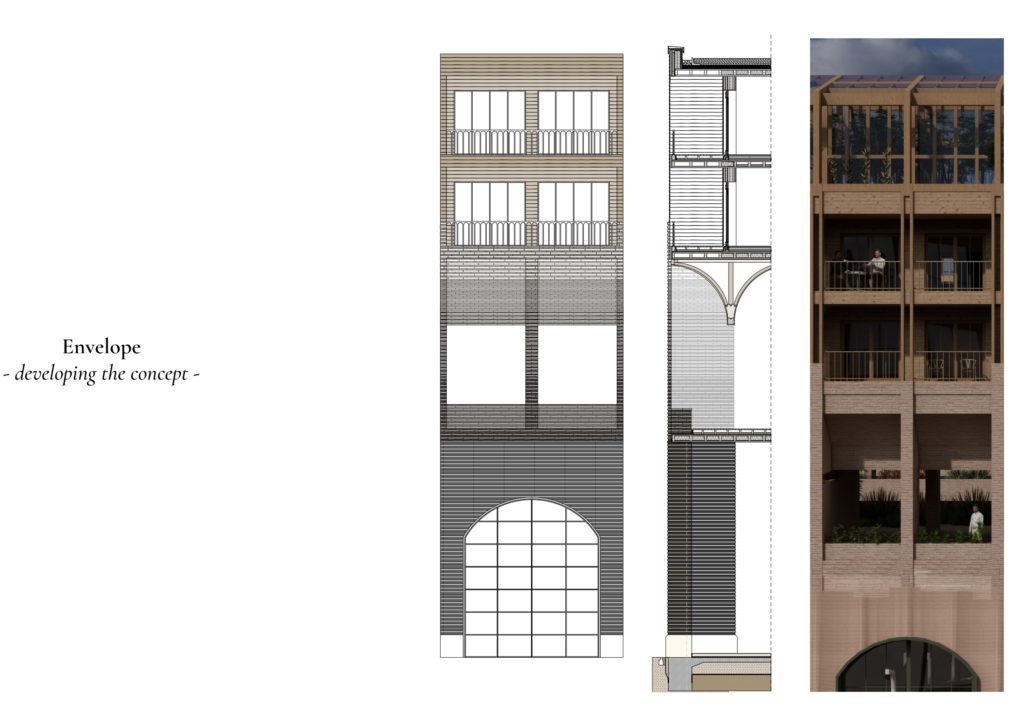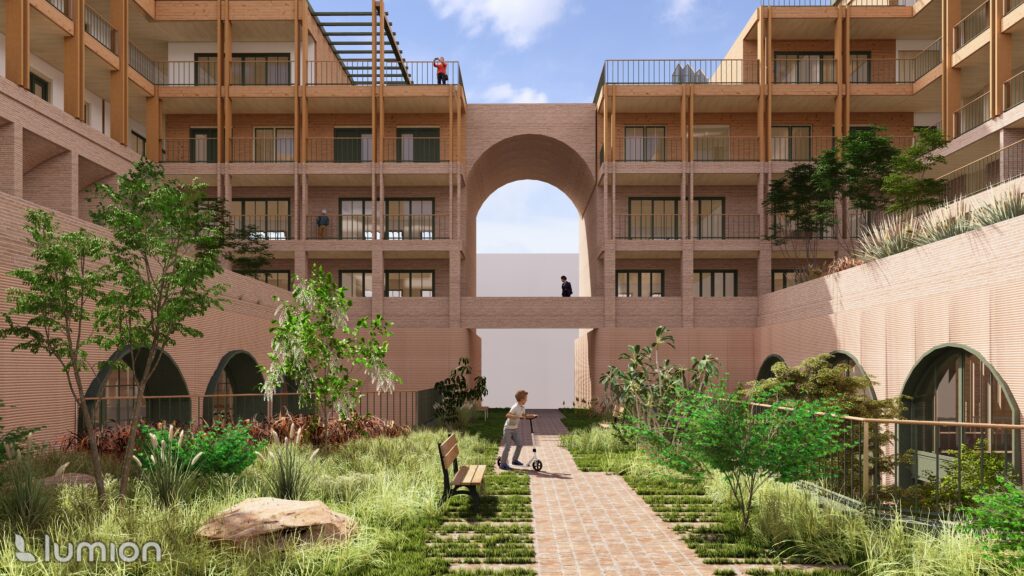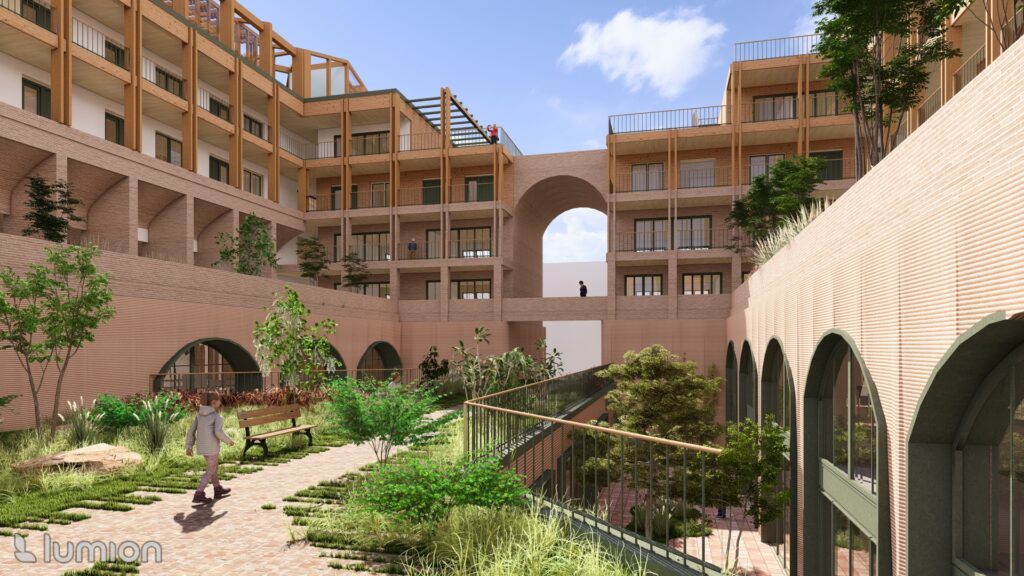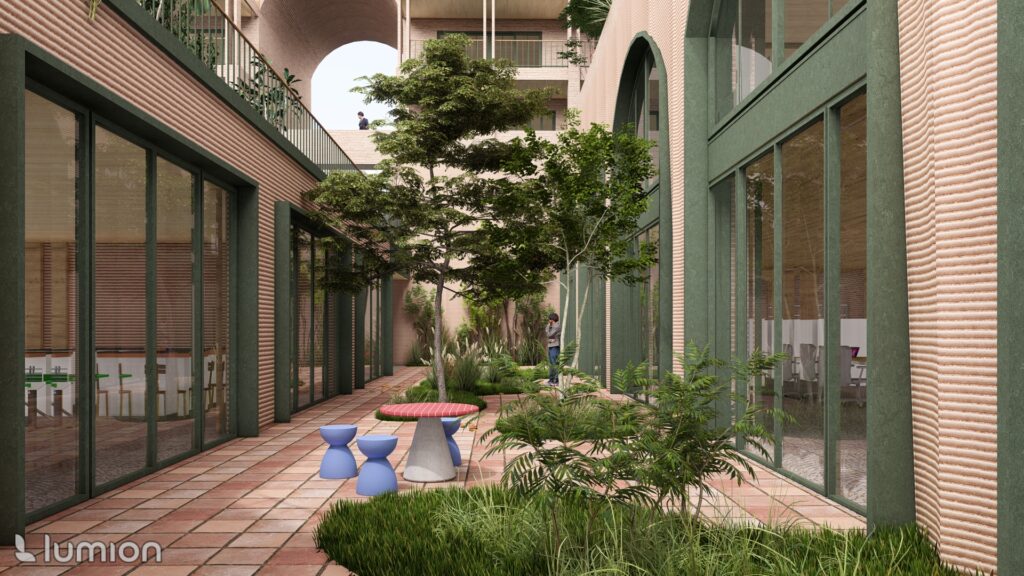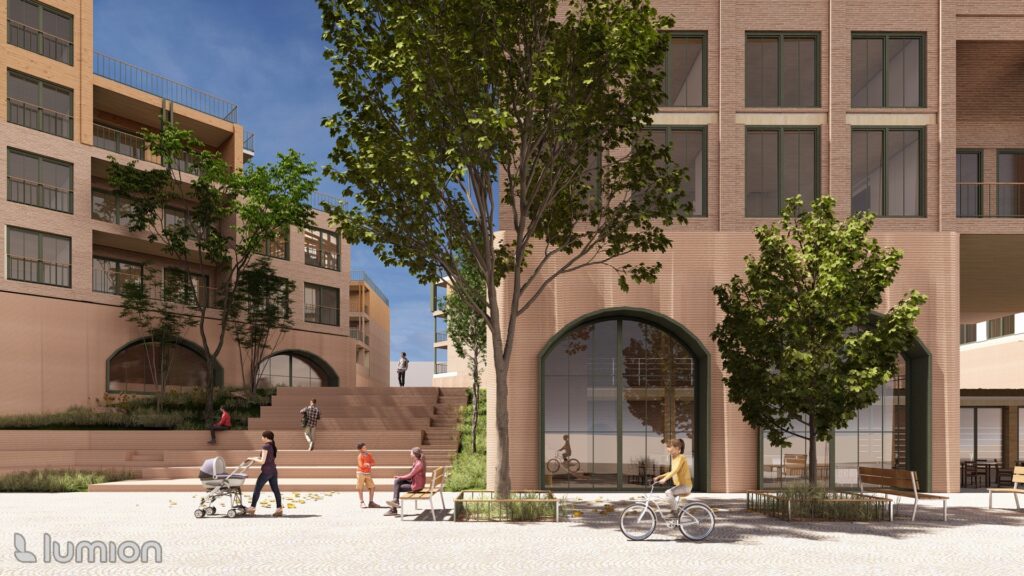Sant Adrià de Besòs is a municipality conurbated to Barcelona. For the past decades, the city has faced a transformation in its spatial organization and uses. The high demand for housing along with an industry that already has no space in urban centers created a challenge, which is the key of the project. In order to answer to this, the group based its reflections on the following question:
How to revitalize the industrial area in Sant Adrià de Besòs, fostering inclusivity, diversity, and resilience in the neighborhood without completely dismantling the existing industries?
Initial studies focused on visiting the site and having a first perception of what happens nowadays in the plot destinated to the group (plot 6). In general, the aspects that deserve being highlighted are the proximity to the metro station (Verneda’s station is placed at the corner of the plot), the poor conditions of the sidewalk infrastructure along with few people walking on it, no interaction between the interior and the exterior of the buildings and a lot of use of cars. Images and other comments can be seen below:
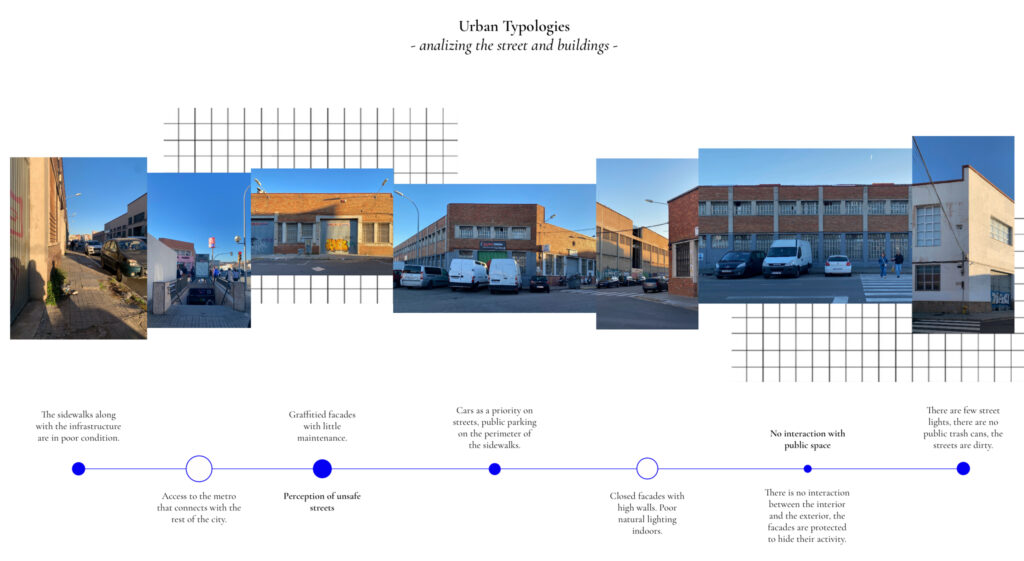
When it comes to a larger scale (the plot compared to the neighborhood), one point that stands out is the lack of green spaces. Even though the river is close, a road segregates both spaces. Besides that, there are no cultural equipments,
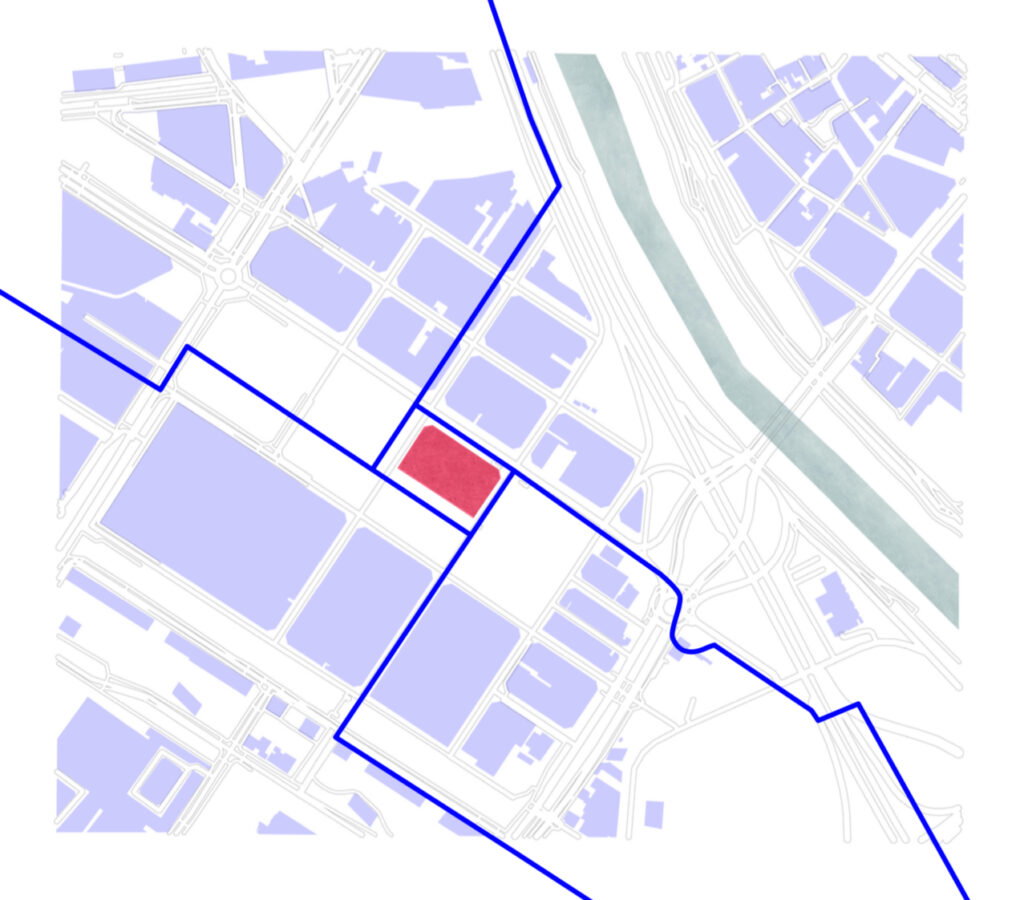
For the project development, the faculties splitted four blocks in eight plots and designated one type of industry for each. In our case, the plot 6 had to develop a mixed use building having 3D Printing industry on the ground level. From that aspect, we decided to take a closer look at this industry, what are the advantages and disadvantages, and also how it could reflect and influence our design. Considering that 3D Printing is an additive manufacturing (based on layering material), this aspect along with topography were taken in consideration.
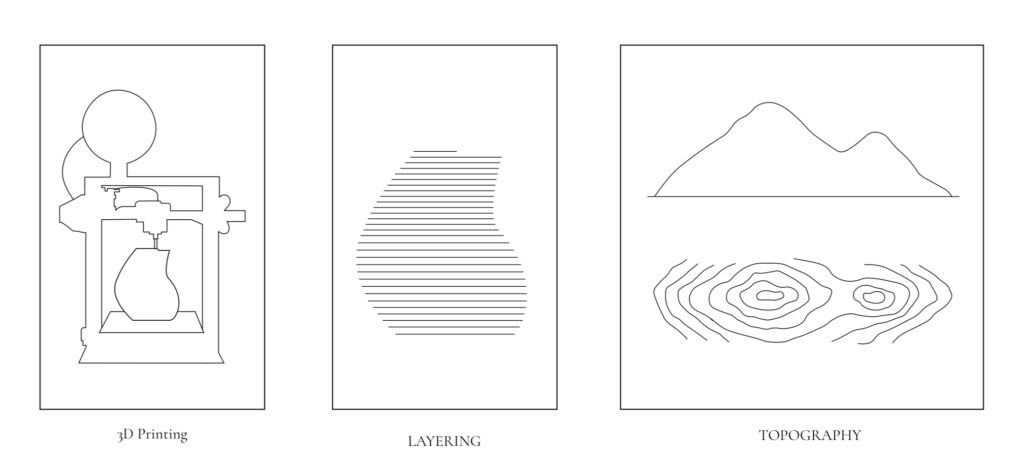
The general intentions of the project were the following:
- Integration with the city: cornerstone of community development.
- Lush green areas and vibrant public spaces, fostering a sense of community and connection with nature
- Technology and innovation HUB
- Holistic approach to urban development, one that harmonizes with the city, nurtures green spaces, and cultivates a culture of innovation and progress.
Regarding the material, the approach was to take 3D Printing into the building, but also having local techniques (resulting in a fusion of tradition and innovation in architectural materials). The 3D Printing technology would be used in order to do the dividing walls of the industry, the exterior wall of the industry, the fusion between landscape and exterior wall, the stairs and some furnitures.
For the initial conception, Thermodynamics turned to be an important factor to guide the decisions. Because Barcelona has a high humidity and through the main part of the year most part of the descomfort comes from heating, cross ventilation was an important strategy. For this, openings were made on different facades in order to let the air flows (porosity), shading systems were developed and a great intern patio (for more sunlight and airflow) was considered.
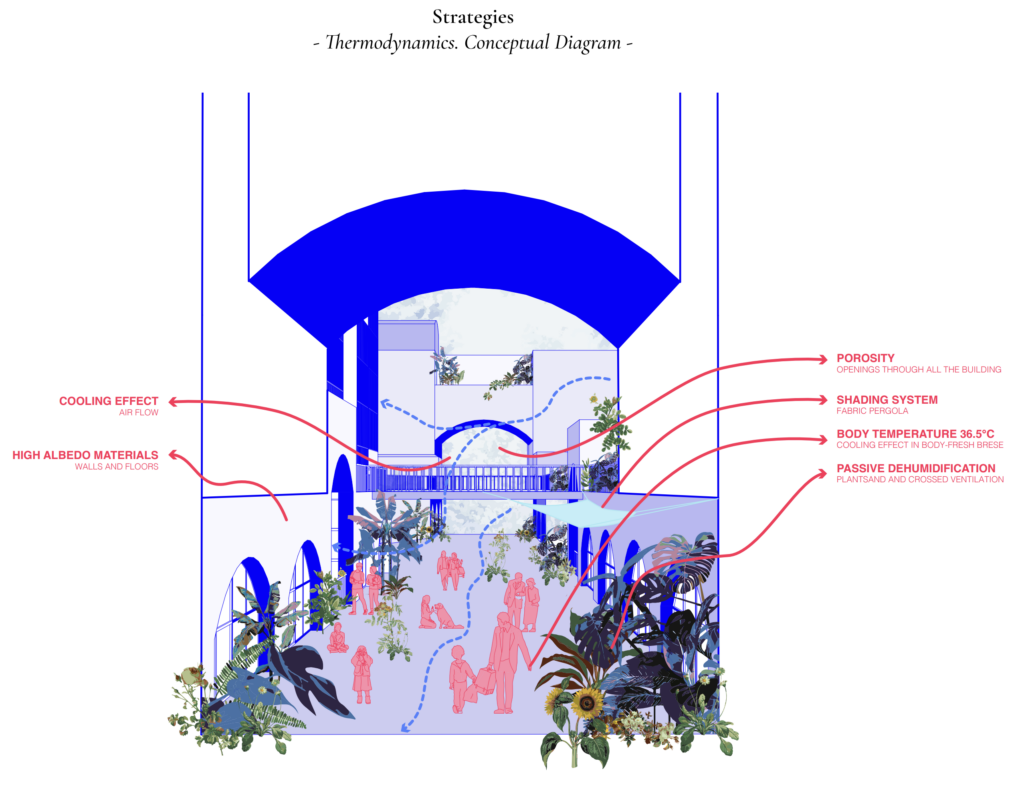
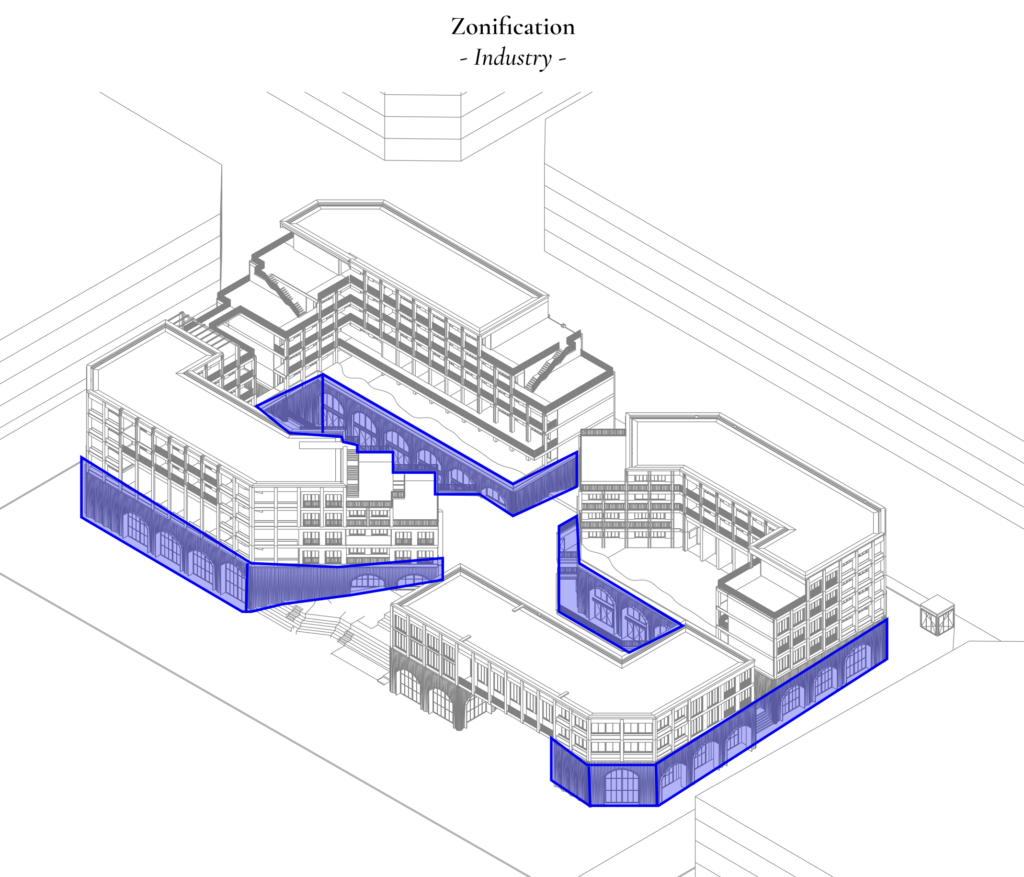
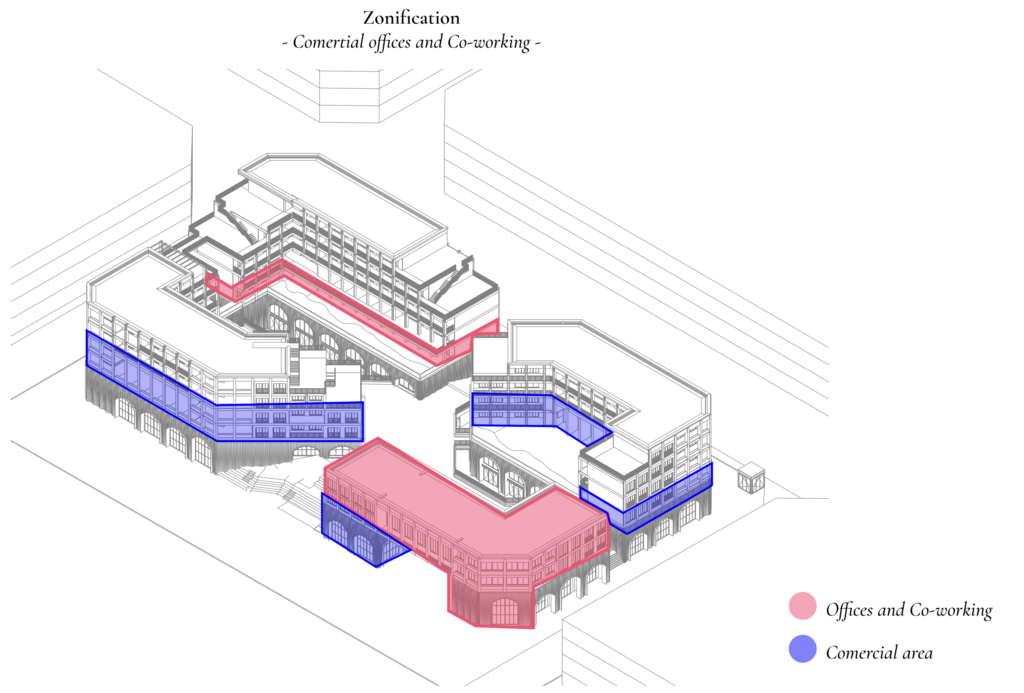
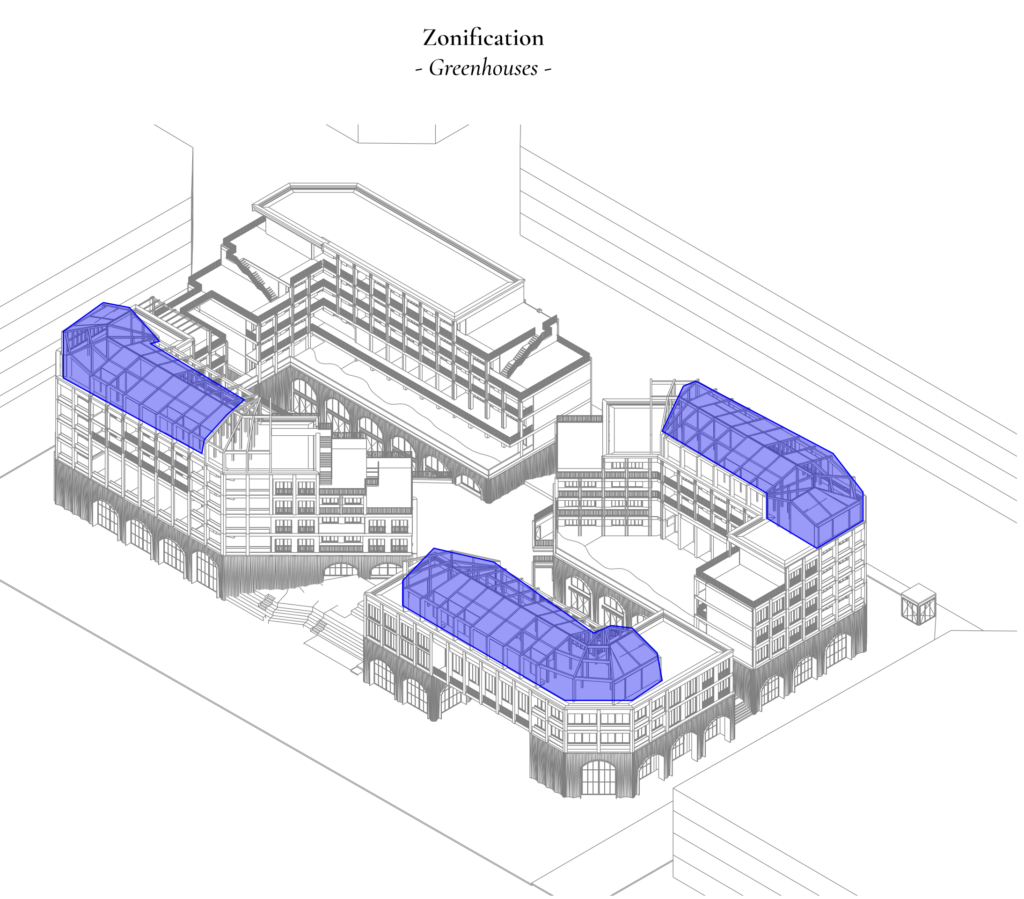
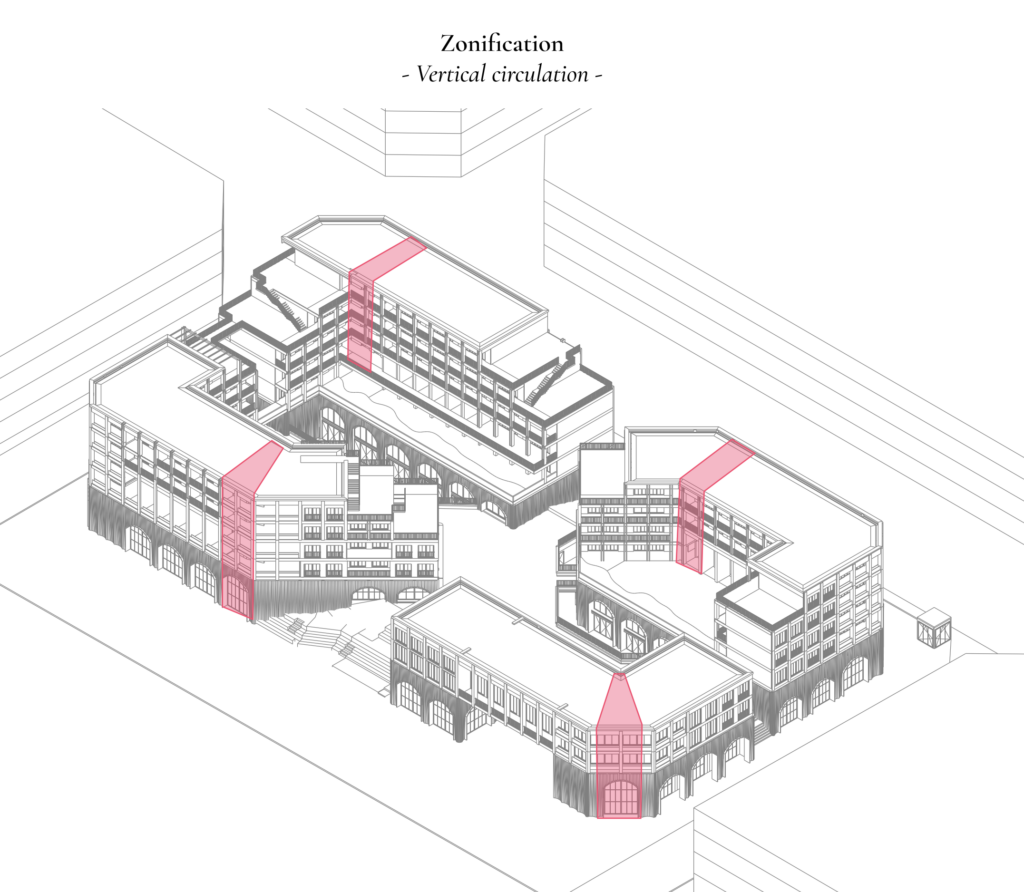
Once it is a mixed use building, circulation turns to be an important issue. In this case, there are different access that do not overlay. The access to the park is done from the stairs and ramps placed on the four different streets. The industry has two different access: one for the supply and another for clients and employees.
